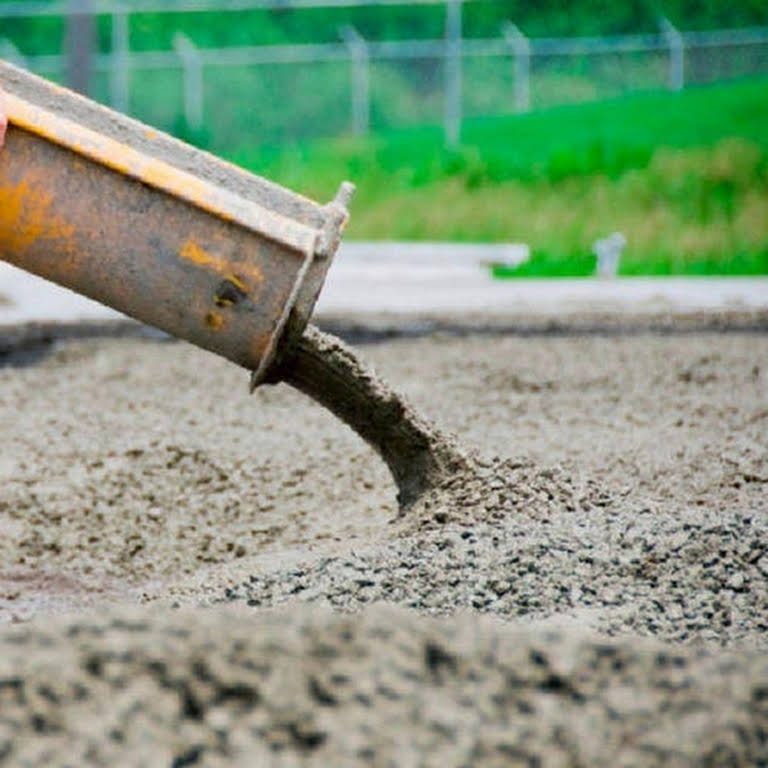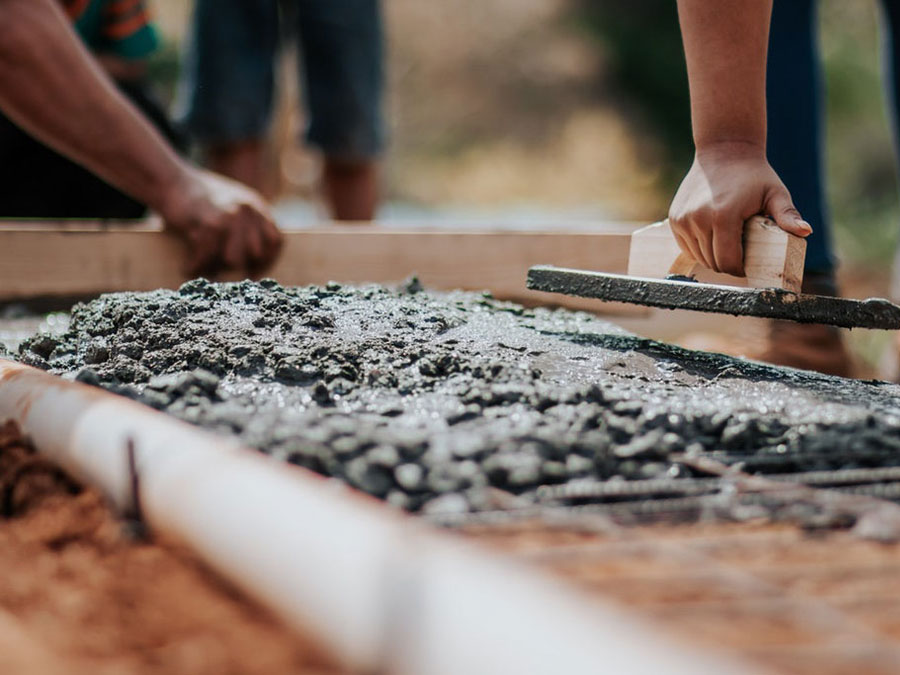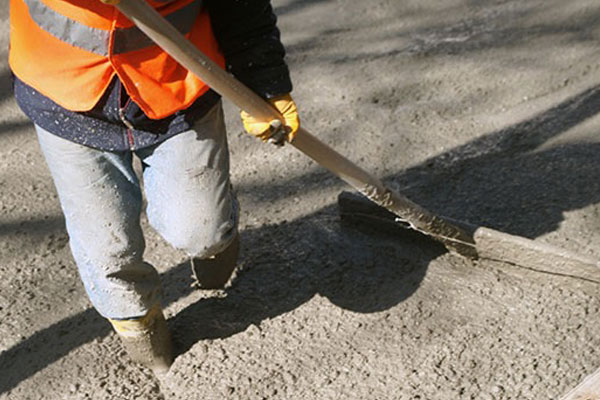Retarding admixtures has little or no effect other than to delay the setting of the cement. They do not plasticize significantly and do not affect the water demand or other properties of the concrete. The Concrete Calculator is used to estimate the volume and weight of concrete necessary to cover a given area. Retarding plasticizing admixtures not only delays the setting of the cement but are also efficient plasticizing water-reducers. They are used to give workability retention to the concrete, delay the setting time and increase initial workability.
Retarding admixtures are used to slow down the speed of the reaction between cement and water by affecting the growth of the hydration products and/or reducing the rate of water penetration to the cement particles. The factors influencing the degree of retardation are water-cement ratio, cement content, C3A and alkali contents present in the cement, type and dosage of the concrete retarder, and the stage at which the retarder is added to the concrete mix itself.

These admixtures slow down the hydration process. They may also reduce the setting time of cement. Retarding admixtures fall into two categories: regular and extended-set. Regular, most commonly referred to as just “retarders,” are used to place concrete in hot climates when long travel times are expected or, in cases of emergency, when placement is delayed. They are also commonly used for mass concrete pours to prevent cold joints. Extended-set control admixtures are those used to delay hydration for many hours or even days. These are usually two-component admixture systems. The first component is a retarder (stabilizer) which delays the setting of concrete. The second component is an accelerator (activator) which overcomes the retarder. The concrete typically reaches the initial set in a few hours after the activator is applied. In the precast industry, retarding admixtures are also used as surface retarders. Surface retarders are used in making exposed aggregate architectural precast. They are typically sprayed or rolled onto the forms. The concrete is then cast into the forms. The next day, the retarded cement is water blasted or brushed off the concrete’s surface, producing an exposed aggregate finish.
Effects of Retarding Admixtures on Properties of Concrete
1. Strength
The starting compressive strength of concrete that retarding admixtures are added is lower than the compressive strength of the same concrete that wasn’t mixed with retarding admixtures.
2. Bleeding
Since retarding admixtures delay the starting process of the setting, retarded concretes are always likely to bleed more.
3. Durability
If concrete is accurately cured, retarded concrete requires to be just as durable as equal to plain concrete.
4. Slump Loss
Retarding admixtures have been shown to be very successful in decreasing slump loss and in this way boosting the initial workability.
5. Workability and Rheological Values
Concrete retarding admixtures have a tiny effect on the workability of concrete. They could cause an increase of initial slump by 60-100mm.
6. Heat of Hydration
Concrete retarding admixtures don’t decrease the heat output of concrete however they decrease the rise of the high temperatures by a time interval much like the one where the concrete was retarded.
7. Air Entrainment
Retarding admixtures do not generally enter air but there are a few retarders that do. Especially these based on hydroxycarboxylic acid can really decrease air content.
8. Volume Deformation
Creep and drying shrinkage isn’t significantly affected by the addition of retarding admixtures but plastic shrinkage might be slowly raised.

Advantages of Retarding Admixtures
The admixtures slow down the initial rate of hydration of cement or prolong the setting of cement paste in concrete. They are generally used to offset the accelerating and damaging effect of high temperature and to keep the concrete workable during the entire placing period which is sufficiently long. They are also used for grouting oil wells. They are also added in the concrete which has to be hauled long distances in transit mix trucks to keep the concrete workable. Retarders delay setting of cement either by forming a thin coating on the cement particles and thus slowing down their dissolution in water or by increasing the intra-molecular distance of reacting silicates and aluminates from water molecules some of the retarding admixtures also reduce the water requirement of mixture. Its advantages are;
- Retarding admixtures extend the setting time of concrete and maintain the workability and cohesion for extended period of time
- In the large construction projects, concrete retarder prevents cold joints formation in successive lifts and make concrete workable throughout the concrete placing
- With the use of concrete retarders, you can compensate for the accelerating effect of high temperature towards the initial setting time and minimise risks of long-distance delivery in hot weather.
- Use of retarding admixtures improves pumpability of concrete by delayed setting period and improved workability of concrete.
- Concrete retarders help to reduce segregation and bleeding in concrete in which poor sand grading is unavoidable.
- It improves the workability of concrete.
- The appearance of the concrete is greatly improved.
- Drying shrinkage and creep rate are also increased.
Types of Retarding Admixtures
There are two kinds of concrete retarding admixtures, defined as Type B (Retarding Admixtures) and Type D (Water Reducing and Retarding Admixtures). The main difference between these two is the water-reducing characteristic in Type D that gives higher compressive strengths by lowering w/cm ratio. The most commonly known concrete retarder is calcium sulphate – gypsum. Sugar is also one of the most common and effective retarding admixture which is used for delaying the setting time of concrete without detrimental effect on the ultimate strength of concrete itself.
1. Organic Retarders
Chemicals used to prepare organic retarders are as follows:
a. Lignosulphonates
b. Hydroxycarboxylic acids and their salts
c. Phosphonates
d. Sugars
2. Inorganic or Chemical Retarders
Chemicals used to prepare inorganic retarders are as follows:
a. Phosphonates
b. Borates
Use of Retarding Admixture
Retarding admixtures are used to slow down the speed of the reaction between cement and water by slowing down the growth of the hydration products and/or reducing the rate of water penetration to the cement particles. By this, concrete stays workable for longer than it would otherwise have been.

Retarding Admixture applications
Retarding admixtures are used in concrete practice to delay the setting times of cement paste, mortar and concrete. In hot weather concreting, delays in transport and handling between mixing and placing may result in early setting and loss of workability and in such instances incorporation of retarders becomes necessary. Retarders may be used in steam curing of concrete, to offset the long term lower strengths developed by the silicate phase and in the construction of large structural units, dams and the fabrication of exposed aggregate panels. Another important application of retarders is to maintain returned concrete from ready-mixed trucks in a workable condition overnight by completely freezing the hydration. Special types of retarders are capable of controlling the slump loss in superplasticised concrete. Its application includes;
- in hot weather (above 20 °C) to prevent early stiffening
- to increase workability time, when used in conjunction with plasticizers
- when a large pour of concrete need several hours to place
- to place concrete in several layers without cold joints
- for mass concrete, to reduce maximum temperature
- to extend the possible time between mixing and placing (e.g. for long transport time)
- prevent setting of the concrete in the truck in case of delay or damage.
Conclusion
Concrete retarders are the mixture that slows down the chemical process of hydration so that the concrete remains plastic and workable for a long time, retarders are used to overcome the accelerating effect of high temperatures on establishing the properties of concrete in hot climates.
Analysis of Retarding admixtures
Effects of Retarding Admixtures on Properties of Concrete

